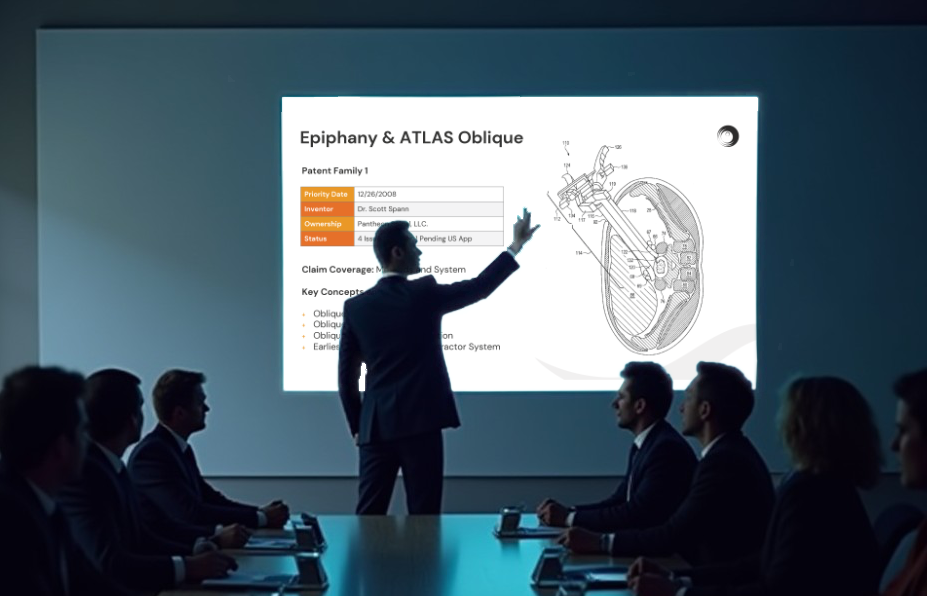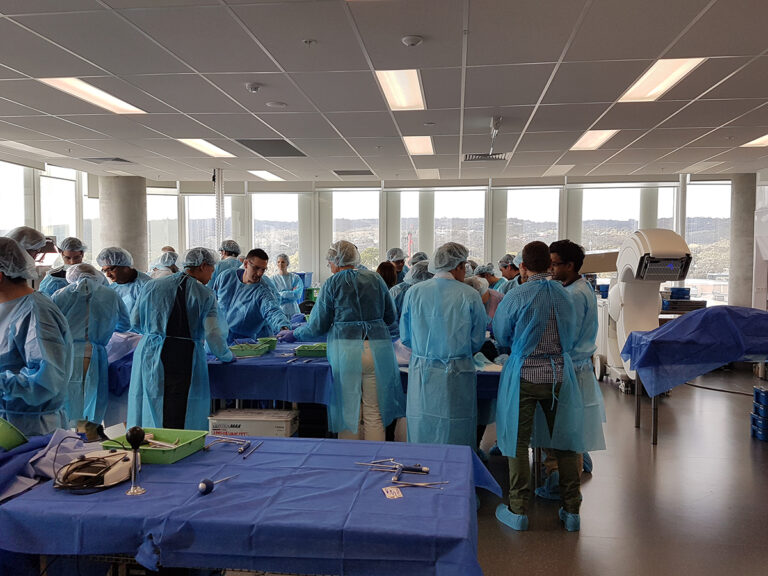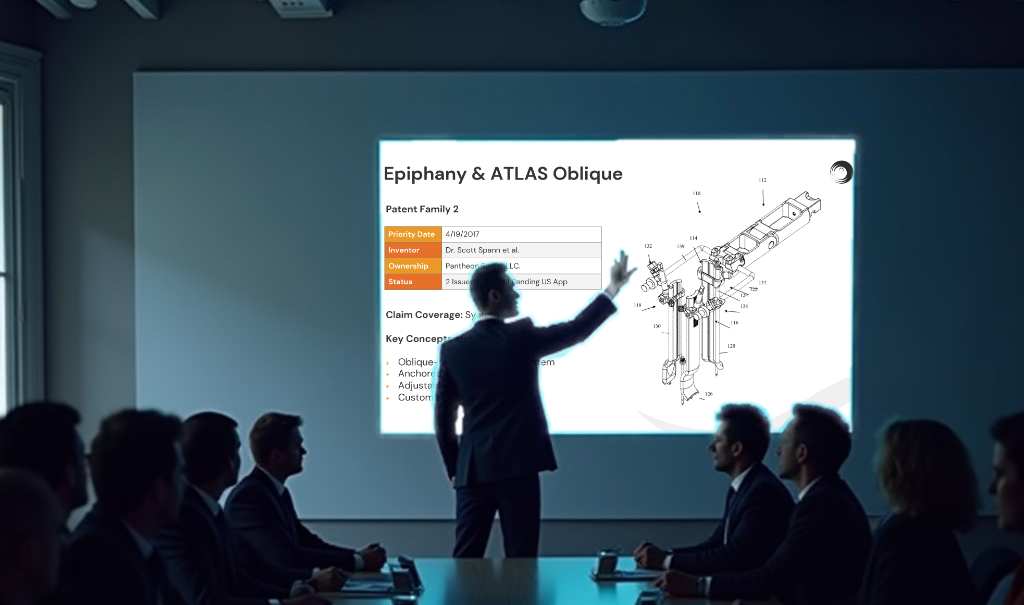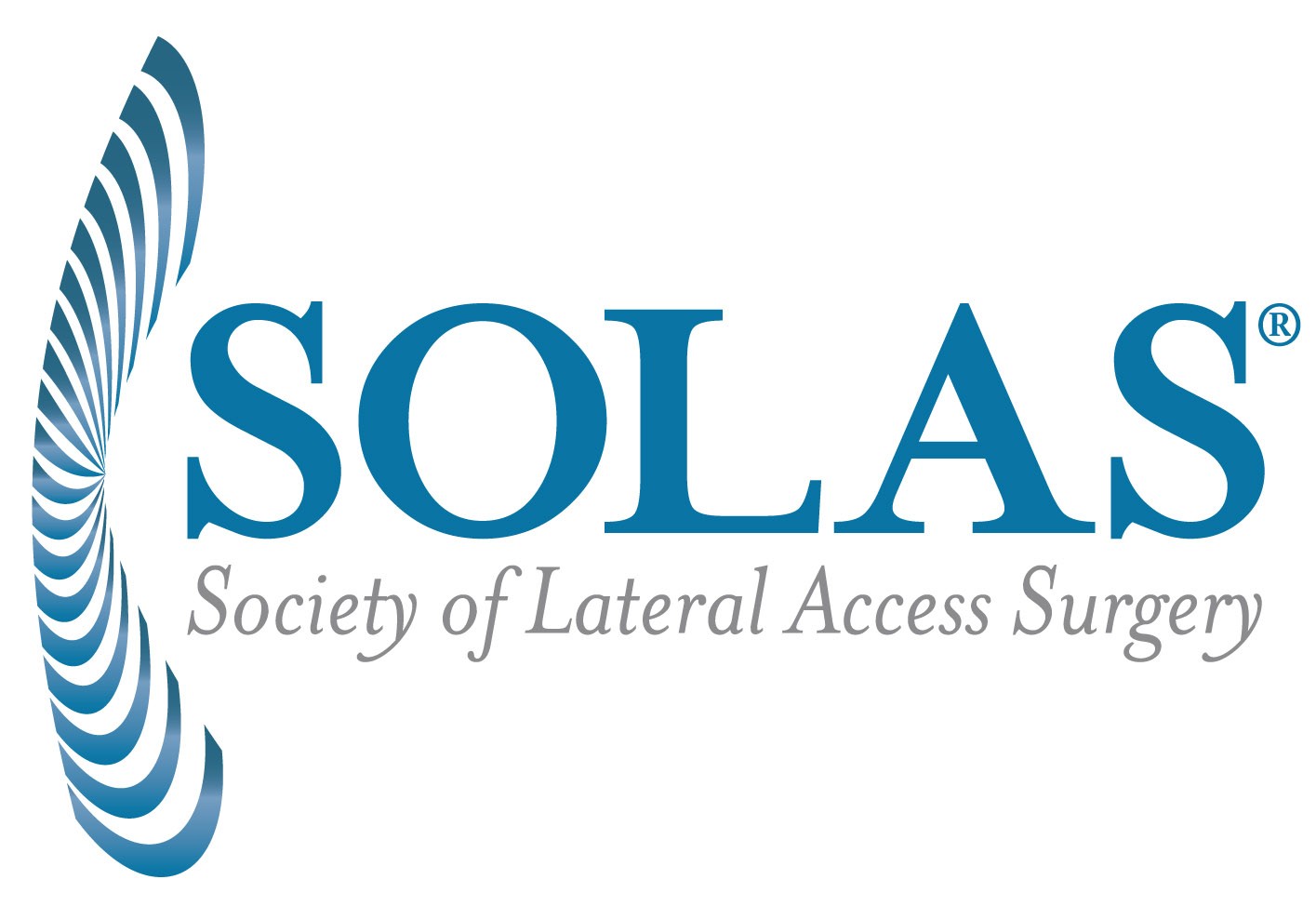
Pantheon Spinal begins developing the Atlas retractor and Epiphany oblique implant. along with the novel accompanying instrumentation.

Pantheon Spinal delivers their first formal presentation of it's novel technology to Nuvasive under signed NDA.

Pantheon Surgical expands its audience in their search for a large scale partner, to now include Medtronic, and Biomet under NDAs. At this time, NuVasive and Medtronic do not fully recognized the functional innovation of the oblique approach. However, driven by our unwavering confidence in its potential, Pantheon Spinal pushes forward with independent development.

Biomet evaluates the technology further in a lab, as Pantheon Spinal presents to Globus Medical under an NDA.

Pantheon Spinal meets with DePuy Synthes to present their technology under NDAs.

Pantheon Spinal presents Case at SOLAS congress annual meeting in San Diego, California. Medtronic revisits the technology. Official filing of U.S. Patent No. 9,451,940 covering spinal implant insertion methodologies.

Medtronic extends offer for Dr. Spann (Pantheon) to lead a collaborative development effort based on his innovative concepts. After declining the offer, Medtronic proceeded independently, ultimately introducing what is now known as the OLIF technique. The OLIF25 procedure for minimally invasive spinal fusion was later presented by Medtronic at the NASS congress meeting, reflecting the foundational ideas pioneered by Dr. Spann. Pantheon's technology is also presented to Stryker under NDA at this time in an effort, yet again, to preserve the spirit of its novelty concept and technology in order to seek a strategic partner.

The FDA clears Pantheon Spinal's submission for uniquely inserted implant array.

Pantheon Spinal secures a patent under U.S. Patent No. 9,451,940, and files an application leading to U.S. Patent No. 10,085,084 covering spinal insertion methods.

Pantheon Spinal secures another IP with the issuance of U.S. Patent No. 10,085,854, and files additional patents leading to U.S. Patent No. 10,959, 860, covering other spinal insertion methods, as well as U.S. Patent No. 10,716,553 for surgical retraction systems.

U.S. Patent No. 10,716,553 is secured for surgical retraction systems. This patent covers Pantheon's revolutionary ATLAS (Anterior Trans-Lateral Approach System) surgical retractor developed for the fusion of L5-S1. Pantheon Spinal files another application leading to U.S. Patent No. 11,478,237 also covering surgical retraction systems.

Pantheon Spinal receives U.S. Patent No. 10,959,860, and files applications securing U.S. Patent No. 11,969,359 covering additional spinal insertion methods. With the steady growth of secured IP for their technology, Pantheon Spinal begins examining legal action to secure the future of the IP portfolio.

Pantheon Spinal receives U.S. Patent No. 11,478,237, and submits applications leading to U.S., Patent No. 11,963,674 covering surgical retraction systems, as well as U.S. Patent No. 17/990254 covering spinal implant systems.

Pantheon Spinal officially receives U.S. Patent No. 11,969,359 and 11,963,674, making it a total of 7 patents awarded to date, with other submissions still in the pipeline on the cusp of approval. With no plans of slowing down its progress of innovation, Pantheon Spinal will continue in the pursuit of protecting the IP portfolio through careful and strategic legal action.